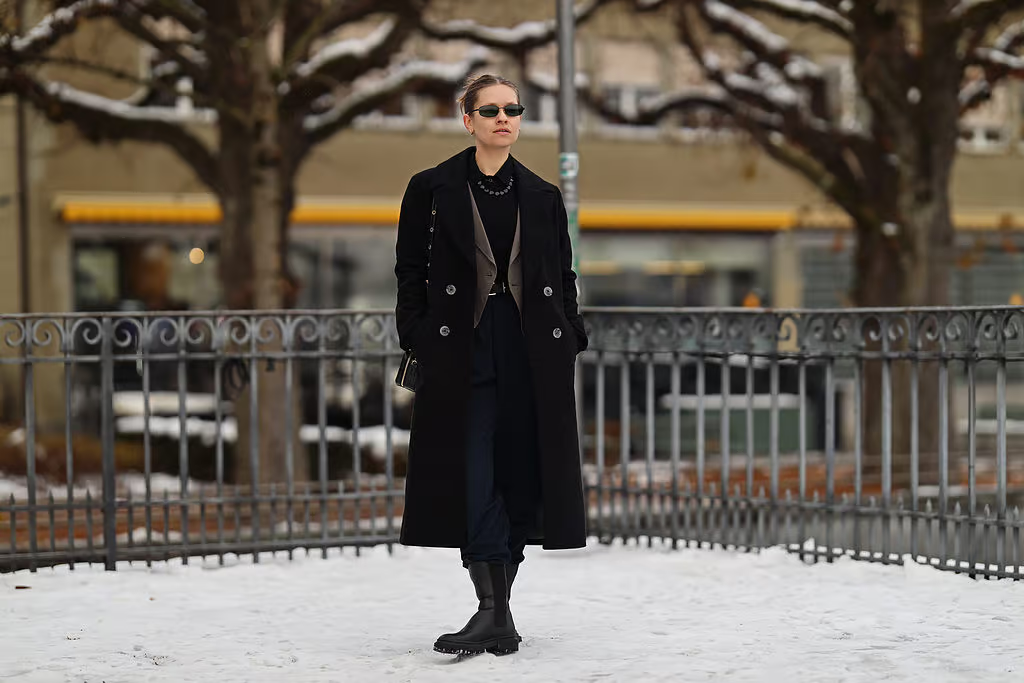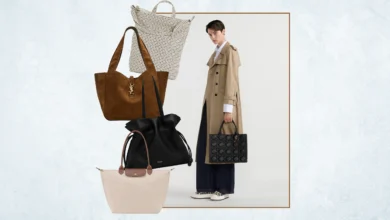Dark Academia Fashion has surged in popularity in recent years, evoking a nostalgic, intellectual aesthetic that blends academic influences with classic, gothic styles. The trend draws heavily on European university culture, literature, and a love for scholarly pursuits. Central to this distinctive style are the fabrics, textures, and tones that create its sophisticated, mysterious, and timeless look.
In this article, we will explore how specific fabrics, rich textures, and moody tones serve as the foundation of Dark Academia Fashion, creating a wardrobe that is not only fashionable but also evocative of intellectual depth and history.
The Influence of Fabrics in Dark Academia Fashion
Fabrics play a pivotal role in the essence of Dark Academia Fashion. They contribute to the mood, comfort, and timeless appeal of the aesthetic. The key to mastering this look lies in the use of natural, durable fabrics that evoke a sense of history and craftsmanship.
A Scholarly Staple
Wool is one of the primary fabrics used in Dark Academia fashion. This material, often associated with academic attire such as tweed blazers and cardigans, brings both warmth and texture. Wool suits, scarves, and vests evoke a traditional, vintage feel, making them essential pieces for colder weather. Wool tweed blazers in particular have become synonymous with Dark Academia, as they echo the halls of prestigious universities.
To fully embrace the look, opt for wool coats, sweaters, and accessories in earthy tones like olive, brown, and grey. These pieces not only offer warmth but also give a nod to the historical aspect of academia.
Timeless and Comfortable
Cotton is another versatile fabric in Dark Academia Fashion, used predominantly for shirts, blouses, and trousers. Its breathability and durability make it a go-to fabric for layering and creating classic looks that don’t sacrifice comfort. Crisp white cotton button-downs, paired with darker outerwear, create a striking contrast that is key to this aesthetic.
Lightweight cotton shirts and dresses can be layered under heavier wool or tweed pieces, allowing for versatility in various seasons. Choosing high-quality cotton ensures the pieces age well, adding to their vintage appeal.
A Touch of Luxury
Velvet, with its rich and luxurious texture, adds a gothic element to Dark Academia Fashion. Historically, velvet was a fabric of the upper class, and incorporating it into your wardrobe evokes a sense of sophistication and opulence. Velvet blazers, dresses, and accessories like headbands or scarves introduce a sense of luxury and refinement to the otherwise rugged and academic aesthetic.
In particular, deep, jewel-toned velvet pieces can make a striking statement. Colors such as emerald green, burgundy, or navy blue elevate the look while maintaining the mysterious, intellectual aura central to Dark Academia.
Exploring Textures in Dark Academic Fashion
The textures used in Dark Academia Fashion are equally as important as the fabrics. Layering a variety of textures creates depth and complexity, evoking a sense of scholarly gravitas and timeless elegance. Combining different materials within a single outfit is a hallmark of this style.
Tweed and Herringbone
Tweed and herringbone fabrics are quintessential in Dark Academia fashion. Known for their distinct woven patterns and structured feel, these materials are often found in blazers, trousers, and overcoats. Tweed, in particular, embodies the academic heritage that is central to the Dark Academia aesthetic. Whether in blazers, skirts, or vests, tweed adds a sense of traditionalism and historical gravitas to any look.
The heavy texture of tweed or herringbone makes it perfect for layering, especially in colder months. Pair a tweed blazer with a wool sweater and a cotton buttondown shirt for a rich, multi-textured ensemble.
Cozy and Intellectual
Knitted garments play a crucial role in creating the cozy, intellectual vibe associated with Dark Academia fashion. Cable-knit sweaters, cardigans, and even knitted scarves can be layered over shirts, blouses, and dresses to create an inviting and lived-in feel. Chunky knits in earthy tones, such as beige, camel, and moss green, are staples in the Dark Academia wardrobe.
Knits work particularly well in the fall and winter months when layering is key. Opt for oversized, slouchy sweaters for a casual yet thoughtful look, or go for more fitted, vintage-style cardigans to maintain a polished appearance.
Classic and Edgy
Leather adds a touch of edge to the otherwise academic aesthetic of Dark Academia Fashion. Leather loafers, boots, satchels, and belts ground the look in a classic, timeless way. Leather accessories, especially in deep brown or black, help add structure and polish to an outfit.
For those looking to incorporate a slightly rebellious or gothic element, leather jackets or gloves can juxtapose the softer textures of wool and cotton, creating a striking contrast that aligns perfectly with the darker side of this aesthetic.
Tones and Color Palette in Dark Academia Fashion

The color palette in Dark Academia Fashion is just as important as the fabrics and textures. The tones used are often dark, muted, and earthy, evoking a sense of mystery, autumnal beauty, and intellectual depth. The palette often reflects the atmosphere of old libraries, candlelit rooms, and ivy-covered university halls.
Earthy Neutrals
Neutral, earthy tones form the backbone of the Dark Academia color palette. Colors such as beige, taupe, olive green, and brown are staples in this aesthetic. These tones are versatile, allowing for seamless layering and mixing of fabrics and textures.
Beige trench coats, brown tweed blazers, and taupe wool scarves are great foundational pieces. These neutral colors lend themselves to an overall cohesive look that is grounded, mature, and timeless.
Mysterious and Gothic
Dark tones are equally essential in creating the moody, scholarly look that defines Dark Academia fashion. Deep hues such as charcoal grey, burgundy, forest green, and black add an element of gothic elegance. These colors are often used in outerwear, blazers, trousers, and accessories.
Opt for a black velvet dress or a deep burgundy wool coat to introduce a more mysterious and dramatic element to your outfit. When these darker shades are paired with lighter, earthy tones, they create a visually striking contrast that embodies the academic-meets-gothic essence of Dark Academia Fashion.
Subtle Luxury
While the Dark Academia aesthetic predominantly favors muted, neutral tones, jewel tones such as emerald, navy, and plum can add a touch of richness and luxury to your wardrobe. These colors, when used sparingly, enhance the depth and texture of an outfit. For example, an emerald green velvet blazer or a navy wool scarf can introduce a subtle yet sophisticated pop of color without straying from the classic Dark Academia look.
Layering and Styling in Dark Academia Fashion
One of the hallmarks of Dark Academia fashion is the art of layering. The combination of different fabrics, textures, and tones allows for complex and visually engaging outfits. Key to this look is the balance between polished and rugged elements, as well as the interplay of lighter and darker tones.
Layering fabrics for depth
Begin with lightweight, breathable fabrics such as cotton or linen as your base layer, and then build upon that with heavier materials such as wool, tweed, or velvet. A crisp white cotton shirt, for example, can be layered under a wool vest and a tweed blazer, creating depth while maintaining comfort and mobility.
During colder months, add knitted cardigans or oversized scarves for an extra layer of warmth and texture. By layering, you can create a look that feels both comfortable and effortlessly intellectual.
Mixing Tones and Textures for Balance
Dark Academia Fashion thrives on contrast, both in terms of color and texture. Pair dark, rich fabrics like velvet or leather with lighter, earthy tones to create balance in your outfit. For example, a black velvet blazer can be paired with beige trousers or a camel-colored wool scarf to add lightness to the look without sacrificing the overall aesthetic.
When mixing textures, ensure that your outfit remains cohesive by staying within the same color family. Muted tones, such as browns, beiges, and greys, naturally complement each other, allowing you to experiment with textures without overwhelming the overall look.
Conclusion
Fabrics, textures, and tones form the essential foundations of Dark Academia fashion, creating a look that is not only visually striking but also deeply evocative of a scholarly, intellectual lifestyle. By incorporating rich fabrics such as wool, cotton, velvet, and tweed and layering them with a careful balance of textures and tones, you can master the art of this timeless and sophisticated aesthetic.
Whether you’re drawn to the gothic elegance of dark hues or the nostalgic charm of earthy neutrals, Dark Academia Fashion offers endless possibilities for self-expression through its thoughtful use of fabrics, textures, and tones.





